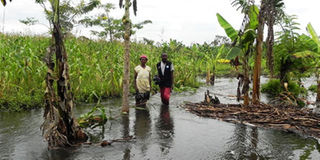Better to prepare than respond to disasters

The Uganda National Meteorological Authority has warned about heavy rains and thunderstorms as we go into the second rainy season – September to December.
This warning brings to mind the kind of disasters experienced almost every year. These include flooding and landslides.
A recent study by Civil Society Budget Advocacy Group (CSBAG) and Oxfam Uganda revealed that these types of disasters had “the greatest catastrophic, displacement and damage/loss effects on Ugandans” between 2012 and 2017.
Indeed, we have reported stories of people losing their lives and homes over the years. Last August, landslides hit at least three villages in the Mt Elgon region, displacing more than 200 people.
Floods have also had their toll on several areas in the country, displacing hundreds, destroying homes, gardens and infrastructure.
Apart from the distraction of lives and property, these disasters leave a high cost of restoration in their wake. Having to resettle people, providing emergency support such as foodstuff and medical supplies, repairing roads and bridges and the like all cost money.
While the Office of the Prime Minister (OPM) has a budget and plan to respond to these disasters, it is important to have the same for disaster preparedness, mitigation and prevention.
Incidentally, Uganda has a national platform for disaster risk reduction, complete with disaster management committees at district level that meet monthly. We also have the National Emergency Coordination and Operations Centre that appears to be active at a local government level.
These are commendable strategies in regard to disaster preparedness. However, a lot more can be done.
For instance, with the recent warnings of heavy rains and thunderstorms, OPM can give clear information to mitigate the risks. While the meteorological warning mentions “above normal rainfall over most parts of Uganda and near normal rainfall in most parts of Karamoja and southern cattle corridor”, this is too broad for people to make an informed decision on how to protect themselves.
We expect the government to highlight the specific areas that may be affected; how bad it is likely to get and what people can do so that these disasters, though they hit, have negligible impact, with little cost to life and property.
This is not taking into account opportunities to address some of the issues that exacerbate the effects of these disasters such as swamp reclamation, dumping of waste in swamps and other drainage systems.
These recommendations, if implemented, would go a long way in helping Uganda achieving her disaster preparedness, mitigation and prevention goals.




